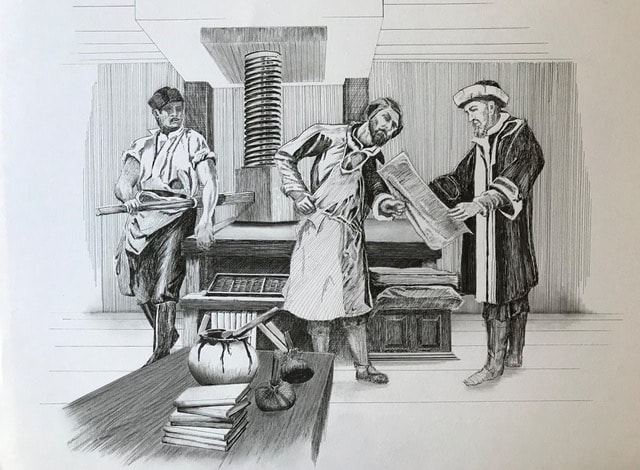 I've been asked to exhibit some of my art in the Library at Smyrna, GA. It goes up July 1 and remains on exhibit for 2 months, until September 1. Since it's a library, I decided it would be nice to display one of my ink drawings of early "book making". This was inspired when touring the Czech Republic and subsequent researching the history of the Moravian Church. This pre-reformation church has continually stressed educating the general population. Their mass-printing and distribution network promoted literacy and fed knowledge and understanding (temporal and spiritual) to middle and lower classes, a luxury previously reserved for the wealthy or powerful. The rest, so to speak, is "history". Printing and distributing books rapidly became a "social media" phenomenon of the 15th Century to spark the Protestant Reformation, much the same way using iPhones and computers is sparking reformative thinking and movements today. If you are in the area, I invite you to stop by and browse the second floor gallery of Smyrna Library while my art is exhibited.
0 Comments
I stopped while bicycling by this herd of sheep grazing under Portugal's cork trees. A soothing pastoral scene. We think of sheep as creatures who meander or mindlessly follow a leader - whoever seems to be in front of the pack. Why do they do that, I wonder.
So, I get back on my bike and silently wonder if the sheep watch us as we pass by with the same curiosity; a long line of strangely clad creatures sitting on a narrow uncomfortable chair atop a 2 wheel contraption, mindlessly peddling and sweating away, following our obvious leader clad in spandex (I'm conspicuous in my cotton cargo shorts), to a destination yet unknown. Why do they do that, they wonder. Oh well, enough philosophical speculation. Suck it up. Only 15 more miles to go to my next destination and a beer. History of migration, invasion and conquest assumes many faces, not always destruction and death. There are times when a face of assimilation, cooperation and advancement emerges, attributed I think to human reason and faith. Europe has seen it's share of both.
This impression was driven home by the our visit to Seville, but especially to Cordoba and the magnificent architecture which once witnessed nearly 700 year peace filled coexistence of Islam, Christian, and Hebrew traditions. Everyone profited, God was honored, and social order thrived. I was dumbstruck when touring Cordoba's 8th century Mezquita Mosque which surrounds the more recent (16th century) Gothic Christian church, designed to be built this way by King Charles V, champion of the Roman Catholic counter-reformation. The Jewish quarter and Synagogue are just around the corner. All this would change during the turmoil of inquisition politics. Our tour guide humbly described facts of this unique time of peace, and hinted at it's significance as part of the soul of Spain. I was unable make a drawing which captures the harmonious synergy of that time - maybe later as it sinks in and as I do more research. For now, my sketch of Seville will have to do. 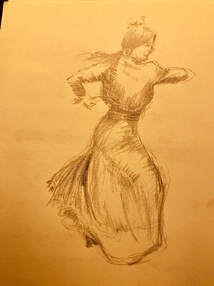 I asked the toreador if there was any relationship in the moves of bullfighting to the moves in the dance of flamenco. "Of course not", he said. I think he was insulted. I didn't mean to insult. But only two days earlier we ate at a local restaurant in Ubeda which was also hosting a wedding party. Our tour leader invited three charming little girls, high from the festivities and wedding cake, to join us. There was singing and dancing at the party, Our tour leader asked "do you do Flamenco?" "Of course" was the response of one precocious 10 year old, followed by a spontaneous demonstration quickly choreographed between adult and child ('could be mother and daughter) showing steps obviously common in a Spanish beginning dance school. It was sweet, and so unexpected that no one captured the scene on camera. Now only a memory; the posturing, the graceful moves with a cape or shaw, the use of staccato rhythm to excite the mood, made me assume there must be some coincidental relationship to the bullfight. My bad. But I'm not convinced either...'something quintessential-Spanish in both of these aesthetic and athletic displays. We ended our trip with a planned dinner-time visit by professional Flamenco dancers. This sketch captures that scene, reminiscent of the wedding party. Sara pointed out a shop near the bullfight ring in Ronda, I think, that sold original etchings. The strokes of the artist were accurate and inspiring, charged with emotion. Of course, I was not allowed to take a photo of his work but I did get permission to stand there and try to capture, in my sketchbook, one of his pieces with my pen.
After 15 minutes I decided to buy that piece to complement a purchase Sara was making. Back home I'll attempt to imitate this artist's style and energy. In the meantime, here's the sketch I began, with permission, while shopping. The day before, we had the opportunity to tour a farm which breeds bulls, and offers the more aggressive ones for competition. There we learned about the business as well as the pageantry of this fading "sport" from the toreador - rock star himself. (Curiously, on our return flight home, I found the airline offered the cartoon movie "Ferdinand" and found myself pleasantly reviewing our tour of Spain while Sara slumbered.)
Storks are a protected bird in Portugal and Spain. They build their huge nests now on towers of high power lines, telephone poles, and free standing platforms erected by the state. Biking past these structures we paused to marvel at the engineering that has gone into the homes of this creature - some weighing over a ton. Storks mate for life. They don't migrate anymore; simply add more material to the nest year after year. This time of year we had the opportunity to see the adult tending to chicks while the mate was searching for food from fields and streams.
This picture is one of the last from my sketchbook record of our Iberian vacation, about 12 sketches in all. |
AuthorBill Needs Archives
January 2024
Categories |

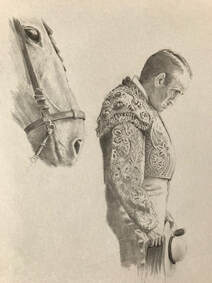
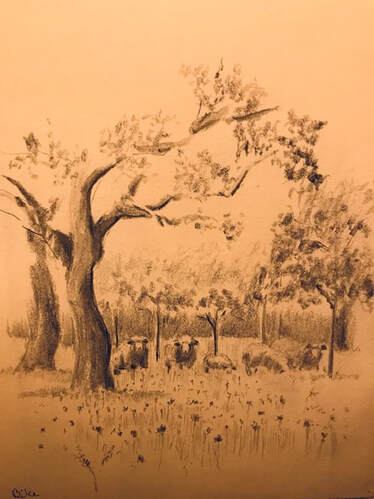
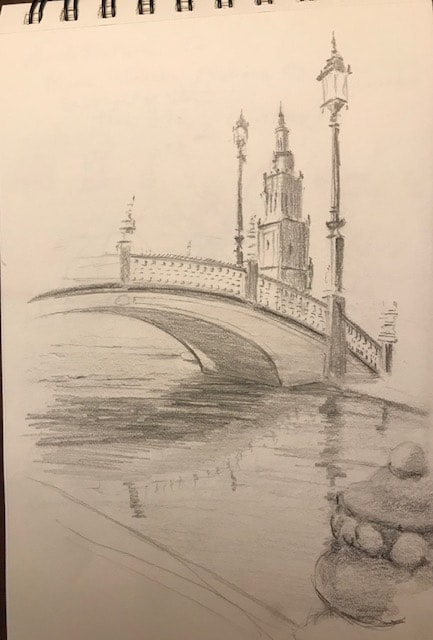
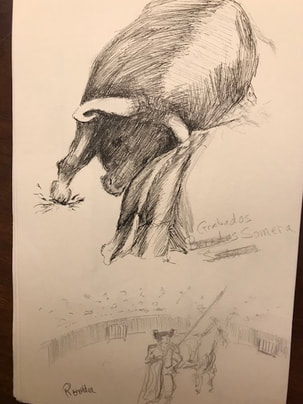
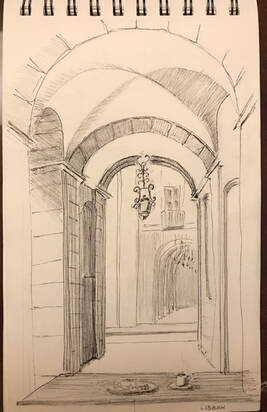
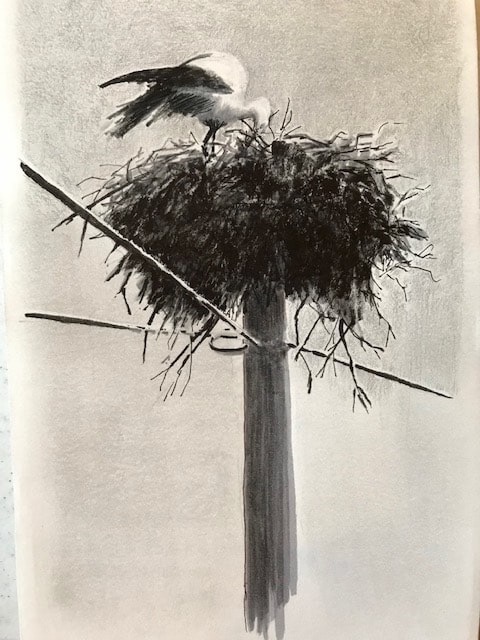
 RSS Feed
RSS Feed